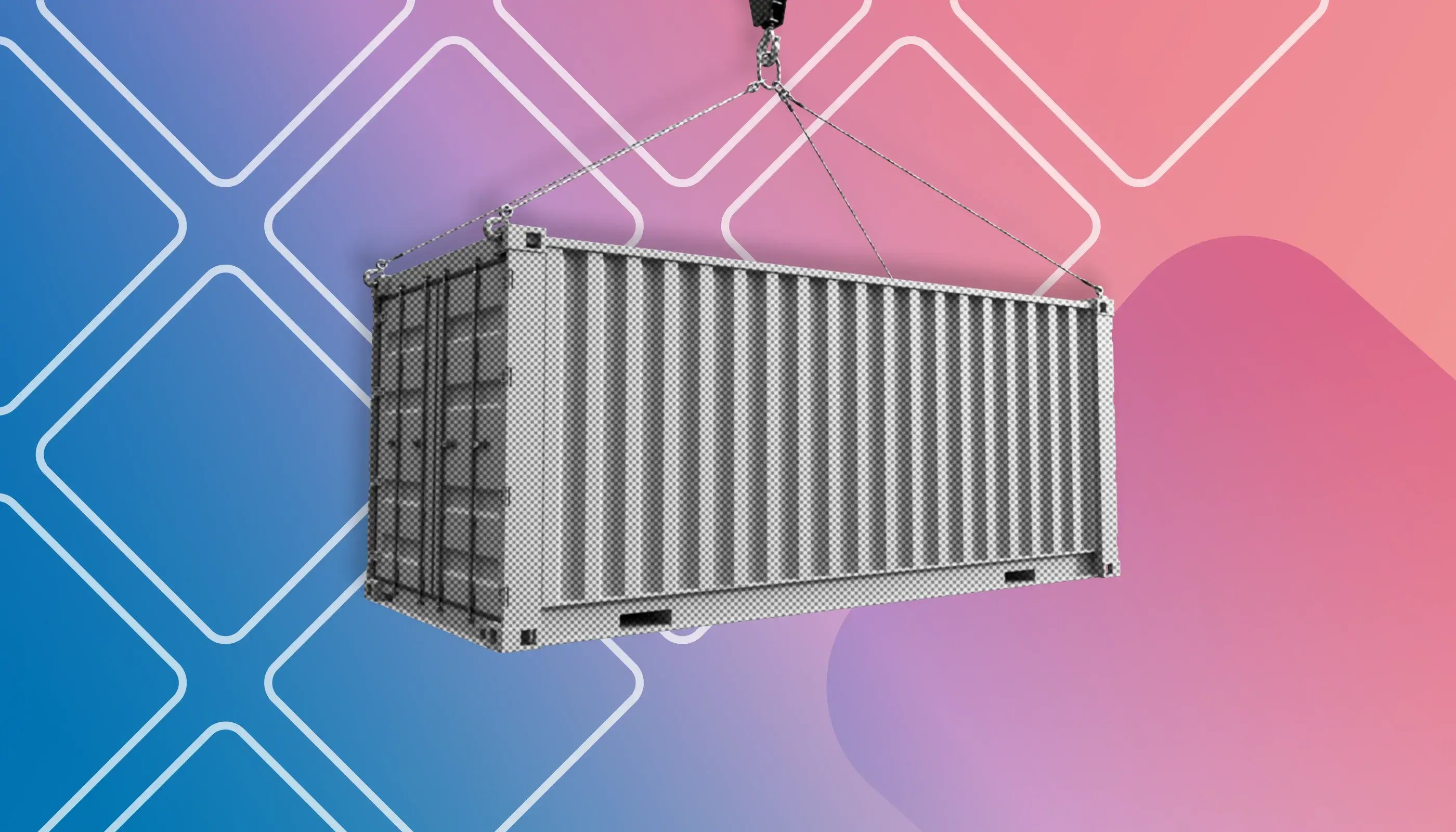Freight exchanges: the advantages and limitations of the flagship tool for carriers and shippers
Freight exchanges, essential in transport, help shippers and carriers to optimise their routes, but their limitations sometimes hamper their efficiency. Discover in this article how marketplaces are revolutionising this sector through their flexibility, simplicity and reduced costs.

An essential tool for road freight transport (RFT), the freight exchange helps both shippers and carriers. It is a virtual platform for connecting shippers and carriers. The goal is to clear freight while optimising the trailer fill rate, as well as trips with fewer empty kilometres. According to Eurostat, 15 to 30% of truck journeys are made empty. The digitalisation of freight transport, via tools such as a TMS, freight exchanges and marketplaces, optimises operations and improves the efficiency of supply chains. In order to define a freight exchange, it is necessary to emphasise the ambivalent nature of this system, since it deals with both transport orders issued by shippers and invoicing by carriers. We explain everything about the limitations of freight exchanges and the alternative that can optimise the transport activity of your supply chain.
What is a freight exchange?
The freight exchange is used within the framework of RFT. Intended for transport players, it comes in the form of an online platform. It serves to connect shippers who want to clear their freight, with carriers who are looking for freight to fill their trailers. Each of them sees the other as a solution to their problem. It is also a way to negotiate prices, as freight exchanges offer you the freedom to set your own rates.
How does a freight exchange work?
Here's how a freight exchange works:
- Shippers advertise their freight on the platform, providing essential information: the pick-up location, the delivery location, the desired loading and delivery dates, the volume expressed in floor space, cubic meters or handling units, the total gross weight, the type of goods, whether there are pallets to exchange, etc. These are fields that must be filled in.
- Carriers advertise their available vehicles, indicating where they are and where they will be going, as well as the free space in the trailer and the acceptable weight. At the same time, they initiate searches on the connections they want to provide and consult the requests issued by the shippers on these same connections.
- The carriers contact the shippers, discuss the details of the service and then agree on the terms of performance.
- Shippers can contact carriers who have vehicles that can transport their cargo, but they also receive proposals from carriers who have seen their requests.
- When an agreement is reached, both parties can contract together, on the platform or outside it.
What are the advantages of a freight exchange?
There are many freight exchanges. The most commonly used are Teleroute (general, for domestic and international), B2P Web (more domestically oriented, with 90% of French carriers) and Timocom (resolutely internationally oriented, especially for Eastern European countries). Before choosing the ones you want to work with, you will need to consider several criteria.
The advantages of a freight exchange for shippers
If you are a shipper offering freight, you can expect:
- Time saved;
- A better vision of the transport market
- Better value for money;
- Ease of use.
The advantages of a freight exchange for carriers
If you are a carrier, then you will find:
- Better visibility on the RFT market
- High flexibility
- Better profitability
- A payment guarantee
What are the limits of a freight exchange?
Subscriptions to a freight exchange
Subscribing to a freight exchange is not free. The platform is paid for by a subscription taken out by both shippers and carriers. This subscription gives them access to freight offers and vehicles in order to find a partner, but also to the services offered by the exchange in question. The subscription amount varies depending on the size of the vehicle fleet and the volume of offers to be placed.
Communication on freight exchanges
The connection between shippers and carriers is sometimes confined exclusively to the platform. It can become difficult to establish a lasting business relationship without real direct contact. On some platforms, relationships are conducted by phone or email, requiring parties to initiate queries manually.
The success rate of freight exchanges is sometimes insufficient
Each party relies on freight exchanges to solve its individual problem. Shippers must clear the cargo, while carriers must fill their trucks. Unfortunately, freight exchanges do not guarantee that the freight will find a carrier or that the carrier will make a decent profit on it. Freight offers can remain on the exchanges for several days, while carriers sometimes have to wait a long time before they can move their vehicles once they are finally full.
Cascade chartering
Some freight exchanges do not adequately verify the reliability of the carriers listed. There is always the risk that some carriers will use the exchanges to take freight and then resell it to other carriers to pocket a commission. This is called cascade chartering, which is not illegal, but it is not very reassuring for the shipper who does not know who will ultimately take charge of the freight. Feedback becomes very complicated in this case, as does the rather unprofessional communication with the customer. Furthermore, having multiple service providers ends up diluting liability in the event of a dispute.
Competition on freight exchanges
Freight offers flood onto the exchanges, and some of them attract an influx of carriers who will seek to corner the market. This increased competition has the effect of driving prices down and therefore reducing carriers' margins.
Increased operational and administrative monitoring
Freight exchanges involve some tasks that can be difficult to manage. It is a question of administrative and financial constraints. Billing tracking can become problematic, especially in the case of cascade chartering. Transport documents can sometimes take a long time to be transmitted, delaying payment for the service.
What is the alternative to freight exchanges?
Alternatives to freight exchanges include marketplaces. These also connect shippers with carriers, but they have many advantages and better meet the current expectations of RFT players.
The functioning of marketplaces in road freight transport
Marketplaces operate similarly to traditional freight exchanges. Shippers or charterers place their freight offers, and carriers offer their vehicles and submit proposals to the shippers. Their strength lies in the multitude of features. These new platforms offer services for managing transport flows, tracking goods and invoicing. Let’s take the example of Upply, a marketplace connecting shippers and carriers.
The advantages of marketplaces for shippers and carriers
- Shippers offer their freight completely autonomously. They can then freely contract with the carrier of their choice, whether regular or new. They have access to all the carriers present in the community.
- A marketplace can be interfaced with a TMS to increase productivity.
- Charter security: shippers benefit from a very large choice among many carriers, and these carriers are systematically verified by the platform. Shippers can thus contract with a reliable partner, in complete security.
- The platform has a documentary database allowing the verification of the legal information of carriers. Important points remain the financial situation, insurance and valid transport license, as well as the certificate concerning posted workers.
- Shippers can set the price or negotiate with each provider. The platform does not intervene in determining the price.
- There is no intermediary, both parties freely contact and handle the transport between them while having access to delivery tracking and all the benefits related to the marketplace, if they close the deal through the platform.
- They can work exclusively with one or more carriers, for a limited period or not, before requesting quotes from other carriers.
- They receive direct price offers from the service providers consulted and can negotiate freely, the contact details of the carriers remain visible.
- Shippers pay directly to the platform which pays the carrier 7 days after it sends the POD. Shippers then receive a monthly invoice grouping together all the transport carried out via the platform.
- Finally, shippers have access to the marketplace through a subscription to the services, but at a cost significantly lower than that of a freight exchange.
The advantages of marketplaces for road carriers
- Carriers have access to all freight offers posted by shippers, except those reserved for carriers designated by exclusivity. They are free to contract with any shipper, including charterers they do not yet know.
- They can search by pick-up location, delivery location, date, vehicle type, cargo type, volume, etc.
- They have access to the shippers' contact details while remaining free to propose their rates directly via the platform.
- When a common ground is found, the shipper validates the carrier's proposal on the platform. The carrier downloads the POD into Upply Connect and then receives Net 7 payment from the platform.
- Access to the platform is completely free for the carrier and without any commitment, subject to working with a heavy goods vehicle or super heavy goods vehicle and being verified in the Gedtrans database, i.e. providing all legal and up-to-date documents.
As you can see, freight transport exchanges offer numerous opportunities to RFT players. However, new methods such as marketplaces are better suited to the practices of companies which tend towards digitalisation and security of transactions. The Upply Connect service perfectly overcomes the limitations mentioned above with, in addition, significant competitive advantages compared to a traditional freight exchange.
Discover Upply
For more information on our solutions and to find out how they can meet your specific needs, contact us today.
Our experts are here to help you find the solution best suited to your company's needs.
Contact usArticles that might interest you


Explore the latest market trends with Market Insights
- In-depth studies on freight transport, supply chain and international trade
- White papers and regular reports for constant strategic intelligence
- Analyses by our recognized industry experts


